Supporting the
ETSI DMR Standard
The Digital Mobile Radio Association plays a crucial role
in the continued success and evolution of DMR technology, ultimately aiming to elevate the user experience.
Read More
Reduced Costs
and Complexity
The DMR air interface provides coverage similar to
analogue, offering the benefits of digital without
the need to increase the number of repeater sites.
Read More
Unleashing the
Potential of DMR
The Digital Mobile Radio Association's application interface (AIS) presents a significant advancement, unlocking a new dimension of functionality and empowering users.
Read MoreDMR is trusted by over
15 million users worldwide
Our resolute team are proud to provide unrivalled support to its global members and the assurance that digital mobile radio is the most widely used digital radio standard for the business world.
The DMR Association’s mission, since 2005, has been to support the European Telecommunications Standards Institute during the DMR standardisation process. To provide the ultimate service to our members we focus on the commercial applications of DMR comprised in Tier II and Tier III.
We welcome new members from across the globe. Whether you are a business that utilises DMR, or an individual that supports the professional use of the DMR standard, you’ll be in great company. We truly appreciate your help in enabling us to drive forward our mission.
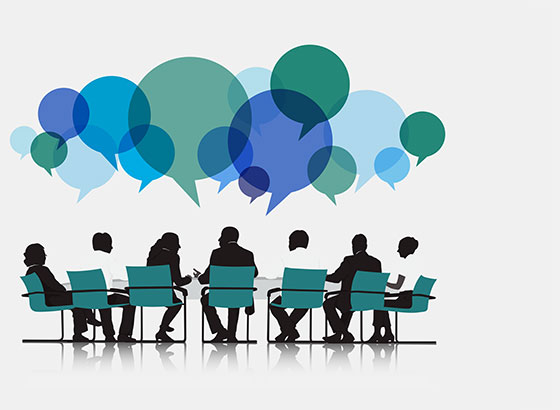
Improving standards:
Elevating experiences
We combine our knowledge and expertise with education, awareness, certification, and interoperability training to guarantee that today’s digital radio technology customers experience the highest level of service. We invest our time and energy to futureproof your investments.
As a member of the DMR Association you’ll benefit from the frequent and direct communications that we hold with global regulators, trade bodies and standards organisations. We are committed to ensure that all DMR products reach the market within a successful, open, multi-vendor chain and that our members gain from continuous, competitive development.
The DMR Applications Interface (AIS) represents a significant advancement in the digital mobile radio (DMR) ecosystem, supporting standardised interoperability between diverse technologies and manufacturers.
Application Interface (AIS)DMRA News
Please join us in welcoming
Funkwerk Systems GmbH
as a category 2 member.
Funkwerk is a specialist in voice and data communications
via analog and digital mobile networks.
Since 1982, the company has been developing and producing train radio technology for installation in rail vehicles, mobile devices and handhelds.
By integrating pioneering technologies and considering the latest standards such as FRMCS, Funkwerk creates radio systems for railroad companies all over the world,
offering investment security and meeting the requirements of the future, thanks to their modularity.
Visit Members page >
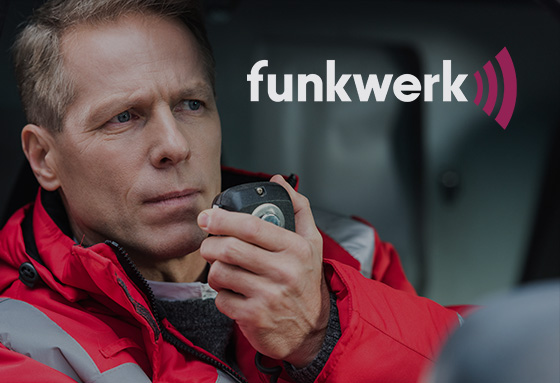
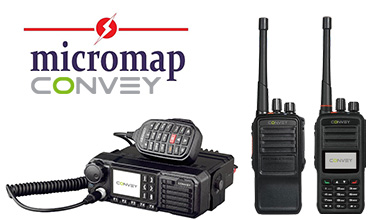
Welcome Micromap Group
Micromap Group: Your Trusted Partner in India for Seamless Communication with CONVEY DMR Radios. Micromap Group has a proud history of being at the forefront of communication solutions. Micromap earned the trust of prestigious clients by delivering reliable & innovative technology. Visit Members page >
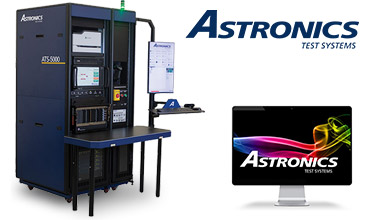
Welcome Astronics Test Systems
Astronics Test Systems (ATS) ensures optimal performance through innovative test solutions. Astronics LMR test equipment is used worldwide by self-maintained law enforcement agencies, utilities, railroads, airlines, defense and radio dealers who maintain their customers’ radio systems. Visit Members page >
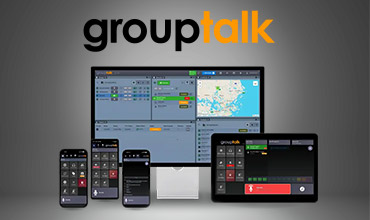
Welcome GroupTalk
GroupTalk Sweden AB develops & provides Push to Talk & collaboration services for enterprise customers, leveraging smartphones, PoC Devices, PC Dispatch & two-way radio systems. GroupTalk's mission is to provide market leading group collaboration & safety services for enterprise clients. Visit Members page >
The DMR Association: Your trusted partner for digital radio Success, boasts a diverse membership of organisations who play a crucial role in the development and widespread adoption of DMR technology.
Members of the Association >Key features of the DMR standard
- Interoperability between manufacturers
- Backwards spectrum compatibility
- State of the art Forward Error Correction
- Options for traffic encryption
- IP Data
- Fast Automatic Vehicle Localisation (AVL)
- Optional encryption for secure communications
- Direct Mode of operation
- Doubling of capacity in existing channels
- Data applications interface (AIS)
- Two-slot Time Division (TDMA) operation
- Green credentials
DMR enables a single 12.5 kHz channel to support two simultaneous and independent calls. This is achieved using TDMA, Time Division Multiple Access. Under TDMA DMR retains the 12.5 kHz channel width and divides it into two alternating
timeslots A and B where each timeslot acts as a separate communication path.
Each communication path is active for half of the time in 12.5 kHz of bandwidth, each uses an equivalent bandwidth of half x 12.5 kHz or 6.25 kHz. This is known as having an efficiency of one talk path per 6.25kHz of spectrum. However with DMR the channel as a whole maintains the same profile as an analogue 12.5kHz signal.
This means that DMR radios operate in the licence holders existing 12.5 kHz or 25 kHz channels; there is therefore no need for re-banding or re-licensing but at the channel capacity is doubled. Read More >
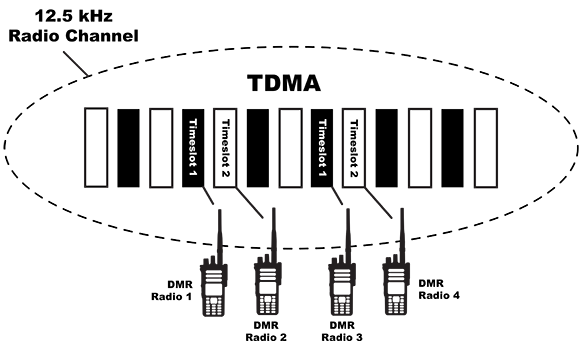
Optimising standards, extending capabilities, and reducing costs through the creation of multiple and mutually compatible products.
The primary goal is to specify affordable digital systems with low complexity. DMR provides voice, data and other supplementary services. Today, products designed to its specifications are sold in all regions of the world.
The DMR Standards